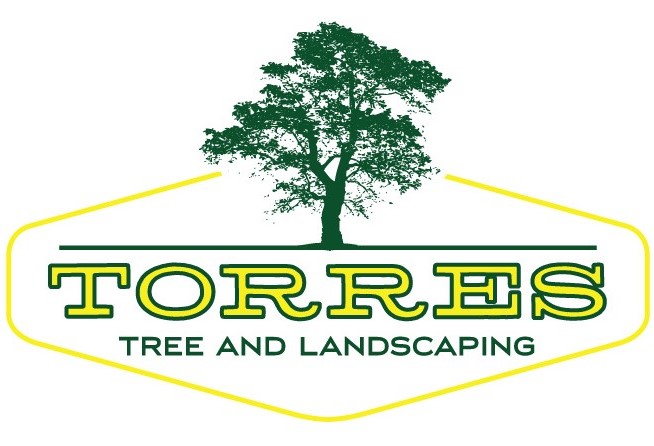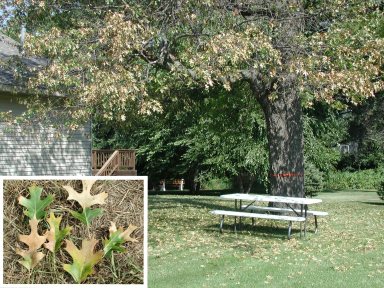Oak wilt is one of the most devastating tree diseases affecting oak trees. This is particularly common in areas like Texas and the Midwest. The fungus bretziella fagacearum, previously known as, ceratocystis fagacearum, spreads through root systems and by sap-feeding beetles. It will rapidly kill trees. Oak wilt affects all oak species, but red oaks and live oaks are especially susceptible. Treating oak wilt effectively requires early intervention and a combination of strategies. In this article, we’ll explore the best oak wilt treatment options. As well as discuss how to protect your oak trees from this deadly disease.
Understanding Oak Wilt
Before diving into treatment options, it’s important to understand how oak wilt works. Oak wilt spreads in two primary ways:
- Root Graft Transmission: The root systems of neighboring oaks connect and allow the fungus to spread from tree to tree.
- Insect Transmission: Sap-feeding beetles (especially nitidulid beetles) carry fungal spores from infected trees to healthy trees through open wounds, particularly wounds from pruning.
Once a tree has the disease, oak trees exhibit rapid leaf wilting. It starts from the outer edges and works inward. This leads to defoliation. Not to mention, death happens quickly. Death occurs in weeks or in months.
Dolan (2016) Red oaks (Spanish oak, Shumard oak, and Blackjack oak) are the most susceptible, and play a unique role in the establishment of new oak wilt infection areas. Live oaks are less susceptible than red oaks, but are the most seriously infected species due to grafted root systems that allow the fungus to spread among adjacent trees.
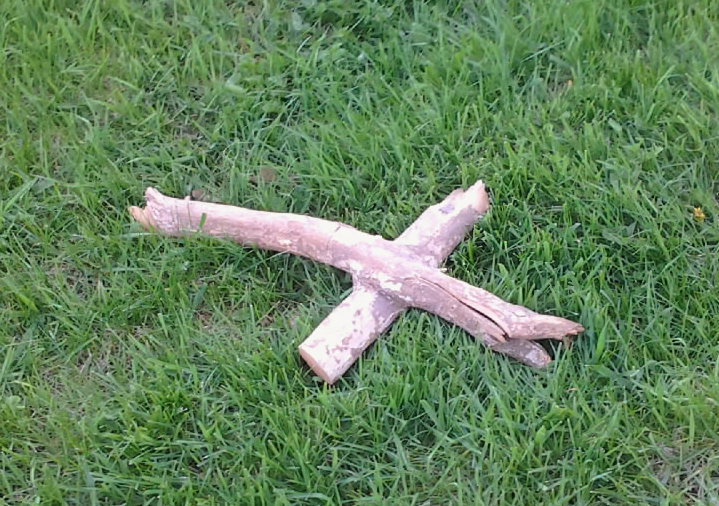
How Does Oak Wilt Spread?
When a tree becomes infected with oak wilt, the fungus primarily targets the vascular system (xylem), which disrupts the tree’s ability to transport water. Here’s a breakdown of the stages of infection:
1. Initial Infection
- Infection source: Oak wilt can enter a tree either through its roots (via root grafts between trees) or through open wounds (via sap-feeding beetles).
- Primary infection site: The fungus usually infects the vascular tissue just beneath the bark, particularly in the trunk and major branches. This is where it starts spreading.
Oak Wilt Specialists of Texas. (n.d.). When a red Oak dies, one or more fungal spore mats may form under the bark. The mat grows and expands causing the bark to crack open. The spore mat emits an odor that attracts Nitidulid beetles. The beetles enter the spore mat to feed and spores stick to the insect. These beetles then travel to other trees to feed on the sap from a fresh wound. The Oak Wilt spores may then infect that tree, starting a new disease center. Experiments have shown that under their own power these insects can travel a mile or more and may appear on fresh wounds in 15 minutes or less.
2. Spread to the Crown and Leaves
- Wilting of leaves: The infection quickly disrupts the flow of water and nutrients, leading to visible symptoms in the leaves. Leaves will wilt, starting with the outer edges and moving inward, often turning brown or yellow. This wilting progresses rapidly, especially in red oaks.
- Defoliation: Leaves may drop prematurely, sometimes even when they are still green. This can happen in large numbers as the tree struggles to stay hydrated.
3. Progression through the Tree
- Branches and canopy: As the infection moves through the tree’s vascular system, it typically causes dieback in the upper canopy and branches.
- Roots: While the fungus may spread through roots initially (via root graft transmission), once inside the tree, the infection impacts the roots as the tree loses its ability to sustain itself. Eventually, the roots begin to die off as well.
4. Full Tree Decline
- Tree death: The disease progresses quickly, particularly in red oaks, causing total defoliation and tree death within a few weeks to months. In live oaks, the process may be slower, but once the tree starts showing symptoms, the infection is often fatal.
Infection Path:
While the trunk (vascular system) is the first part to be affected internally, the leaves and upper canopy are where visible symptoms first appear, as the tree’s water transport is blocked. The infection doesn’t start in the trunk and move outward in a step-by-step manner but instead spreads throughout the vascular system, affecting the tree’s overall water distribution.
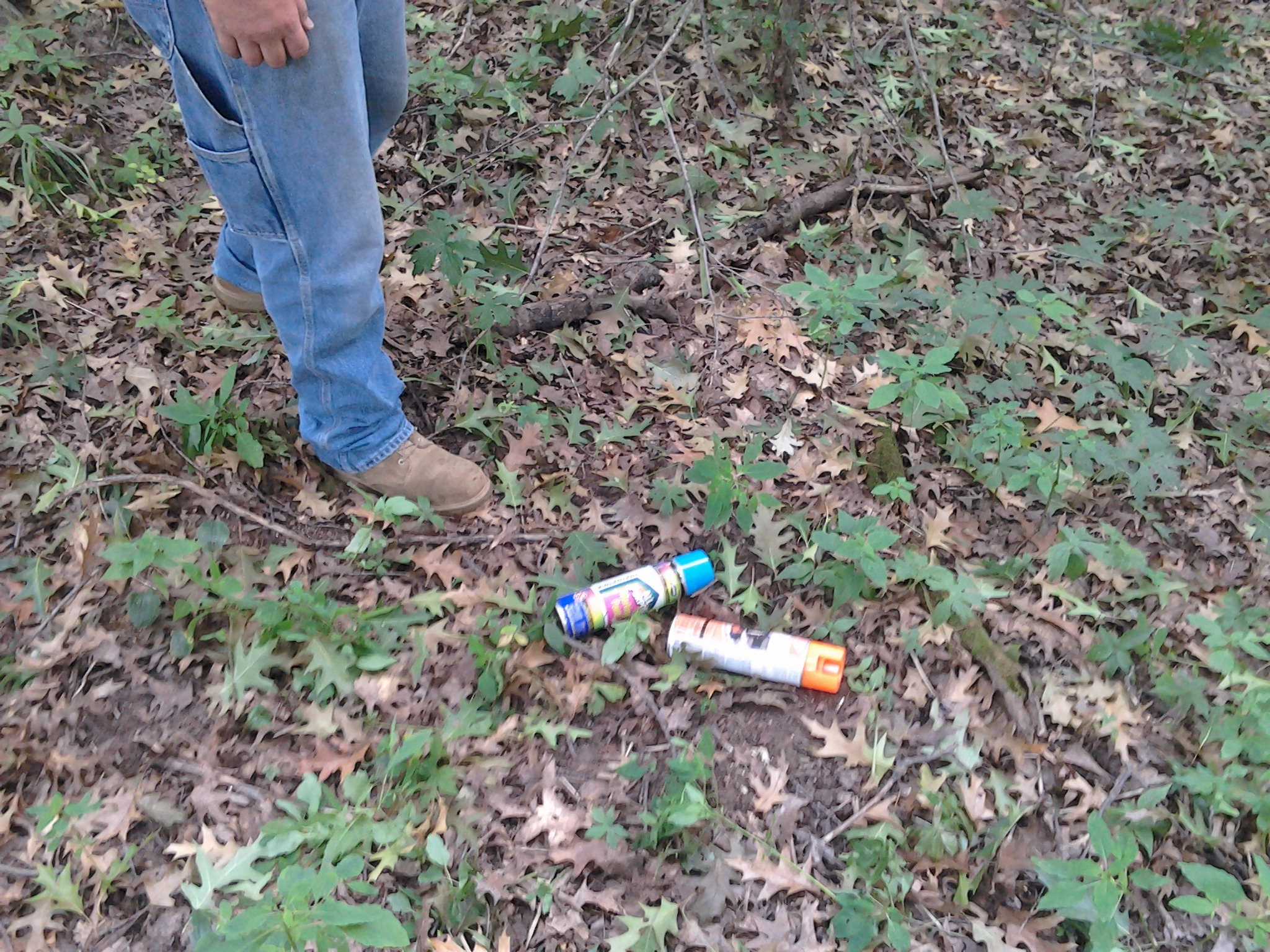
Preventative Trunk Injections with Fungicides
One of the most effective ways to protect trees from oak wilt is by applying fungicide injections. The fungicide propiconazole is commonly used as a preventive treatment. Additionally, it will also slow the spread of the disease in already-infected trees.
- How it works: A certified arborist will inject the fungicide into the tree’s trunk. Next, it moves through the vascular system. This treatment helps protect the tree by strengthening its defense against the fungus.
- Best time to apply: Fungicide injections are most effective when applied to healthy trees in early spring. Or before any visible symptoms appear. They are generally used for live oaks, as red oaks tend to succumb to the disease too quickly for treatment to be effective.
Pro Tip: Repeat fungicide treatments every 1-2 years, depending on the tree’s health and proximity to infected trees.
Root Trenching
Root trenching or root graft disruption, is a highly effective way to slow the spread of oak wilt among trees with interconnected root systems. Since oak wilt spreads easily through root grafts, breaking this connection will prevent the fungus from moving between trees.
- How it works: A trench is dug, typically using a vibratory plow, around the infected tree to sever the roots connecting it to neighboring oaks. This creates a barrier that limits the spread of the disease.
- Best time to apply: Root trenching is most effective when done as soon as oak wilt is detected.
Pro Tip: Make sure trenching is done by a professional who will properly assess the extent of the root system and the correct trench depth.
Pruning and Tree Removal
Pruning is essential for overall tree health. But, pruning oak trees during the wrong time of year will leave them vulnerable to oak wilt. If an oak tree is showing signs of infection, it needs to be removed entirely to prevent further spread.
- How it works:
- Pruning: If tree pruning is necessary, do it during the colder months (November through February) when the beetles responsible for spreading oak wilt are less active. Always seal wounds with pruning paint to prevent infection.
- Removal: If an oak tree is heavily infected, tree removal is the only option. This helps protect other trees in the area. It’s important to properly dispose of infected wood to prevent further spread.
Read one of our other articles that explains how to care for oak trees.
Pro Tip: Never prune or cut oak trees in spring or summer. Fresh wounds during this time attract the beetles that spread oak wilt.
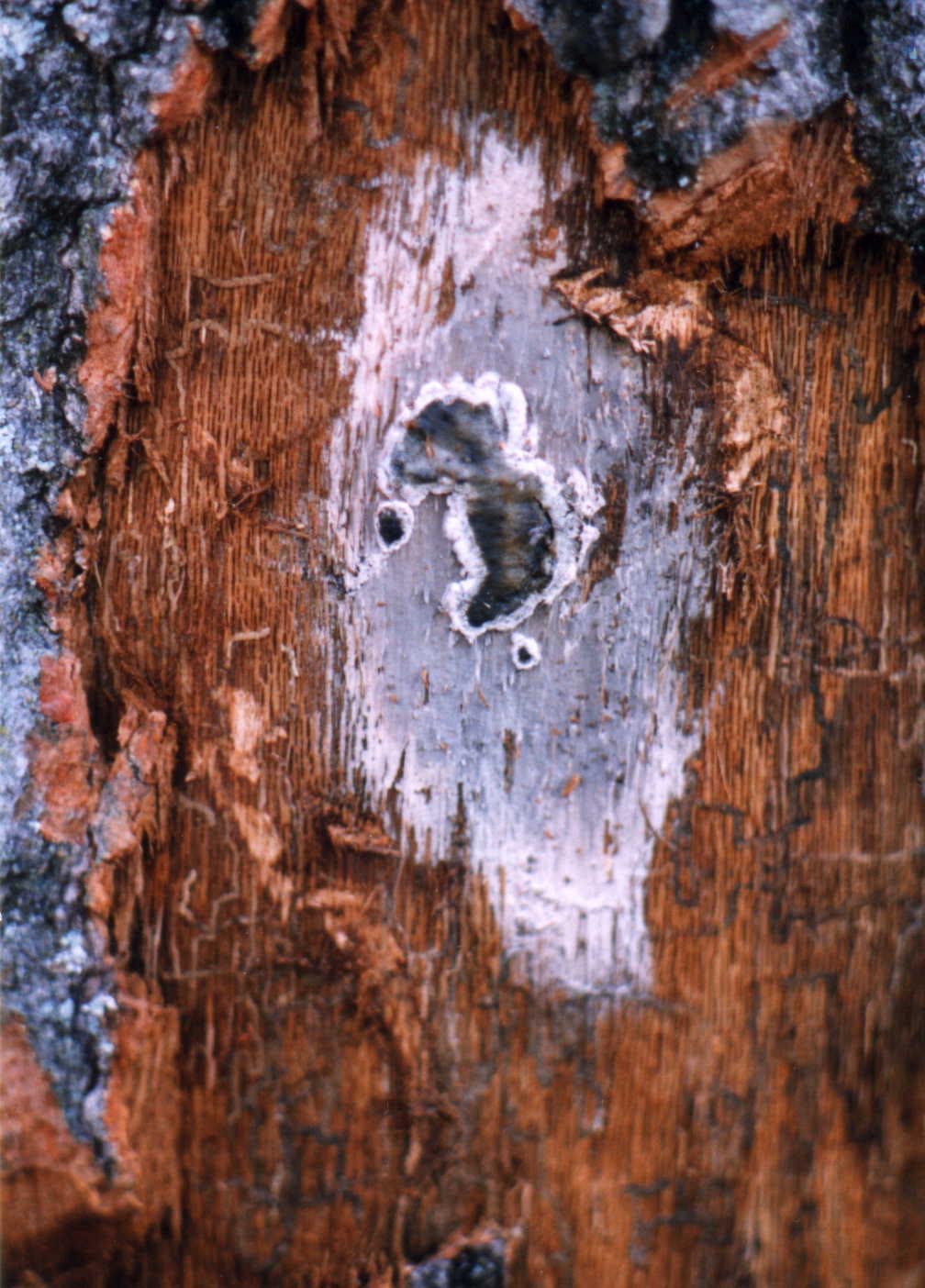
Monitoring and Early Detection
The key to managing oak wilt is early detection. Regularly inspect your oak trees for early signs of the disease. Look for, wilting leaves or browning starting at the tips. Quick action will make a significant difference in saving nearby trees.
- How it works: Monitoring involves visually inspecting trees and sometimes testing the wood for oak wilt fungus. The earlier oak wilt is detected, the more options you have for treatment and containment.
Pro Tip: If you suspect oak wilt, contact a tree service company immediately to assess the situation and create a treatment plan.
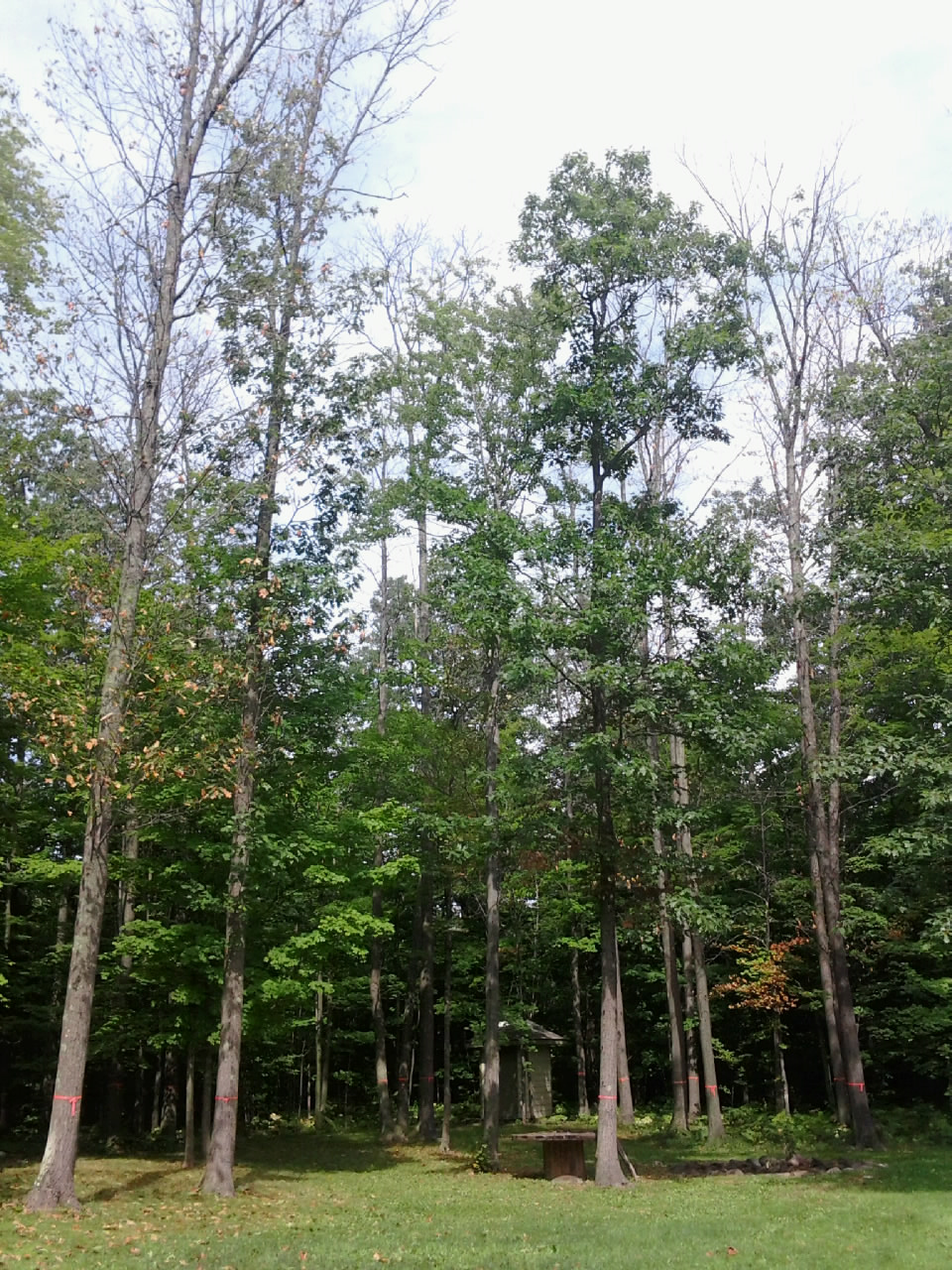
Conclusion
Oak wilt is a serious threat to oak trees, but with the right treatment options, it is manageable and preventable. Preventative fungicide injections, root trenching, proper pruning, and regular monitoring are all key strategies in combating this deadly disease. For the best results, it’s crucial to work with a reputable tree service company who will diagnose the issue and apply the appropriate treatments. With early intervention and proper care, your oak trees will stand a better chance against the spread of oak wilt.
References:
Dolan, C. (2016, May 3). Oak wilt 101. City of Austin. https://www.austintexas.gov/blog/oak-wilt-101
Oak Wilt Specialists of Texas. (n.d.) About oak wilt. Oak Wilt Specialists of Texas. https://www.stopoakwilt.com/oak-wilt.html
The photos in this article were retrieved from Wikipedia on September 26, 2024.
Featured image of tree infected with oak wilt and leaves: By Joseph O’Brien, USDA Forest Service, Bugwood.org – Forestry images website, CC BY 3.0, https://commons.wikimedia.org/w/index.php?curid=11132791
Picture of the two tree roots fused together: By Wood Geek – Own work, CC BY-SA 4.0, https://commons.wikimedia.org/w/index.php?curid=79120666
Picture of pile of infected oak leaves: By Wood Geek – Own work, CC BY-SA 4.0, https://commons.wikimedia.org/w/index.php?curid=79013134
Picture of the spore mat at stage III: By Wood Geek – Own work, CC BY-SA 4.0, https://commons.wikimedia.org/w/index.php?curid=79579336
Group of trees infected with oak wilt: By Wood Geek – Own work, CC BY-SA 4.0, https://commons.wikimedia.org/w/index.php?curid=79013134
